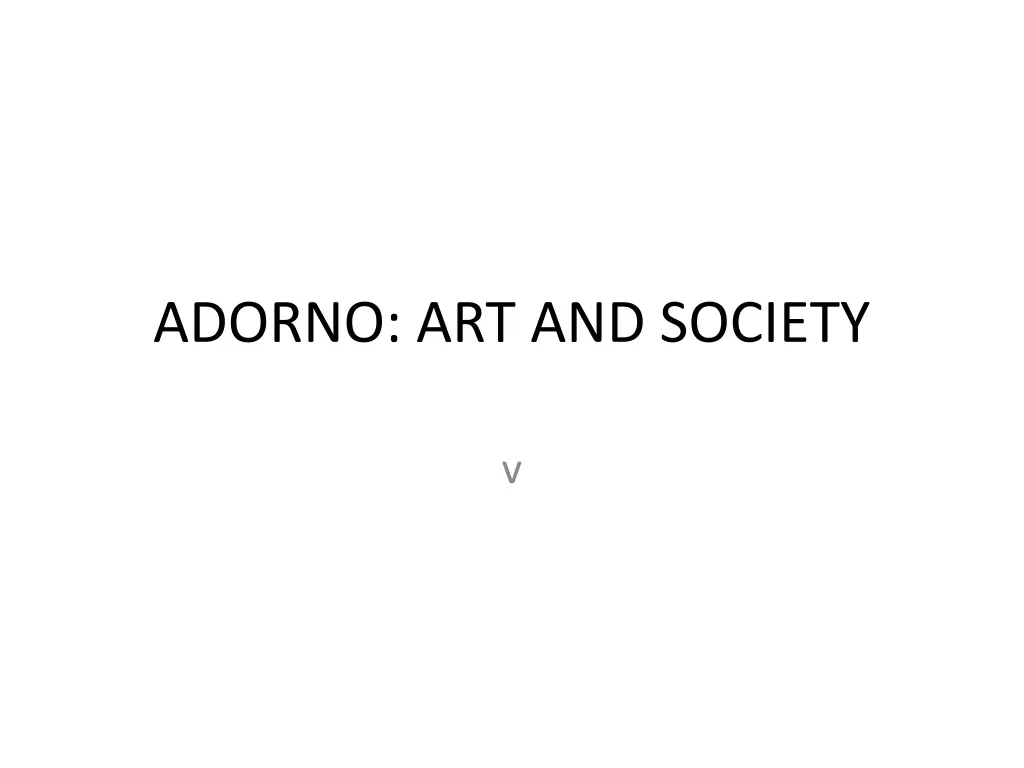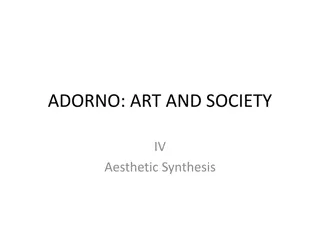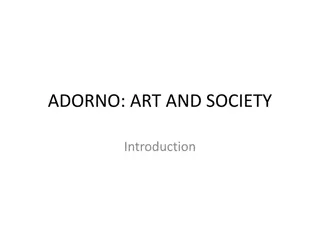
Understanding Adorno's Aesthetic Synthesis in Art and Society
Delve into Adorno's concept of aesthetic synthesis and its role in art and society. Explore how art expresses non-violent, diverse aspects and reveals the oppressive nature of social reality. Discover the significance of mimesis and the truth-seeking nature of art. Unravel the complexities of mimesis as an impulse towards inactivity, assimilation, and epistemic openness. Gain insights into how art captures mimetic behavior and becomes a bearer of autonomy in form. Experience how artworks embody mimesis and assimilate the subject's experience.
Download Presentation

Please find below an Image/Link to download the presentation.
The content on the website is provided AS IS for your information and personal use only. It may not be sold, licensed, or shared on other websites without obtaining consent from the author. If you encounter any issues during the download, it is possible that the publisher has removed the file from their server.
You are allowed to download the files provided on this website for personal or commercial use, subject to the condition that they are used lawfully. All files are the property of their respective owners.
The content on the website is provided AS IS for your information and personal use only. It may not be sold, licensed, or shared on other websites without obtaining consent from the author.
E N D
Presentation Transcript
Aesthetic Synthesis Structural or organizing principle of artworks Non-violent Diverse, heterogenous, diffuse aspects Particularity Expression of the suppresed and muted by rationality and the social system Inherently antagonistic and unstable Intrinsic to each artwork
The truth of art Art reveals on the basis of the aesthetic synthesis the oppressive and false character of social reality Truth is the criterion for art s social significance and its cognitive value
What can art express by virtue of its non-violent, non-suppressive aesthetic synthesis? - Mimesis - Nature - Suffering
Mimesis The attempt to make oneself like something else Historical category a phenomenon that has developed, taking on different functions and features at different points in the history of its development
1. Mimesis as an impulse toward inactivity and assimilation, but also a source of epistemic openness to the particularity of one s environment 2. Mimesis as a magical substitution - Epistemic process intermingled with an attempt at control 3. Mimesis preserved in art
Art is a mimetic behaviour that is captured, preserved in an age of rationality. (Adorno, Aesthetics, 41) Mimetic comportment an attitude toward reality distinct from the fixated antithesis of subject and object is seized in art the organ of mimesis since the mimetic taboo by semblance and, as the complement to the autonomy of form, becomes its bearer. (Adorno, Aesthetic Theory, 110)
Artworks are the objectivations of images, objectivations of mimesis, schemata of experience that assimilate to themselves the subject that is experiencing. (AT, 289)






